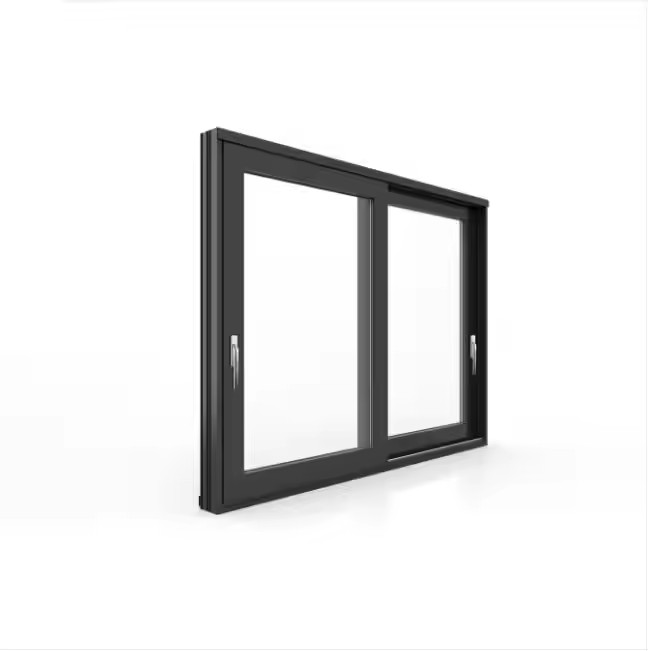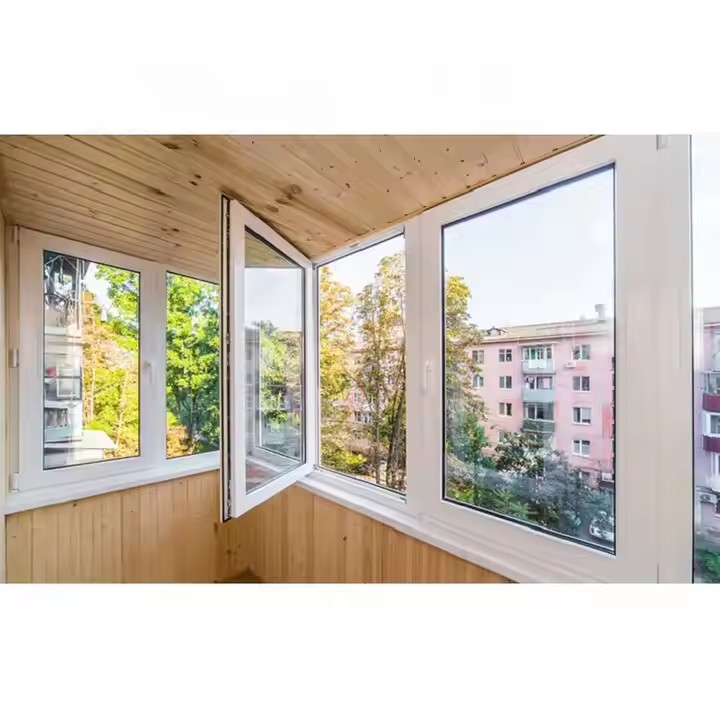Integration of Functionality
When designing and installing folding doors, it’s essential to consider both their aesthetic appeal and functionality. This is a significant issue that needs careful thought. First, folding doors can be used to separate spaces and create flexible layouts. For example, installing a folding door between an open kitchen and dining area allows for the closure of the door during cooking to prevent grease from spreading. When it’s time to eat, opening the door creates an expansive space that enhances interaction. This setup provides functional separation for the kitchen without compromising the overall sense of openness in the space.
In multifunctional rooms, such as a study that also serves as a guest room, folding doors can flexibly switch the space’s purpose. When guests are staying over, closing the folding door turns the area into a private bedroom. When not in use, opening the door allows it to serve as a study, fully utilizing the multifunctionality of the space. The installation of folding doors effectively delineates different areas for varied uses, meeting clients’ demands for versatility.

Folding doors also allow for control over light and ventilation. Choosing glass folding doors—such as clear, frosted, or decorative glass—can maintain light penetration while separating spaces. Opening the folding doors permits air circulation, keeping the interior fresh and dry. For instance, installing glass folding doors between a living room and a balcony allows natural light to flood in, brightening the entire space. Additionally, when opened, these doors facilitate air flow, improving indoor air quality.
For spaces requiring privacy but not complete light blockage, such as bathrooms or dressing rooms, half-transparent glass folding doors can be a good choice. These doors provide a degree of privacy while still allowing light to filter through, preventing the space from feeling oppressive. Folding doors also offer excellent sound insulation and noise reduction. Using materials with good soundproofing qualities, such as solid wood composite doors or aluminum doors with soundproof layers, can effectively minimize external noise disturbances in spaces like bedrooms, studies, or offices. For example, installing soundproof folding doors in a bedroom near a busy road helps shield you from traffic noise while resting.

Sealing strips can also be added around the edges of the folding doors to enhance the seal between the door and the frame, further improving sound insulation. At the same time, these sealing strips can prevent dust and cold drafts from entering, enhancing indoor comfort. This dual-functionality of blocking noise while preventing cold air intrusion makes folding doors highly recommended.
If you’re interested in installing folding doors and want to learn more, please contact Dingtuo Industrial Co., Ltd. via WhatsApp at +8613809889264.

Integration of Aesthetics
First and foremost, the choice of materials and styles is a key factor in achieving aesthetic integration. Selecting appropriate folding door materials based on the overall interior design style is essential. For modern minimalist designs, aluminum or glass folding doors with clean lines and smooth surfaces can reflect a contemporary feel. For example, a white aluminum frame paired with transparent glass folding doors is perfect for modern minimalist living rooms, providing a clean and bright visual effect.
For European classical interior designs, solid wood folding doors can be chosen. Elegantly carved patterns and vintage tones can add an air of sophistication to the space. For instance, a dark walnut folding door with gold handles can enhance the noble elegance of a European-style bedroom. In industrial-style interiors, folding doors with a metallic feel, such as black iron frames paired with transparent or colored glass, can create a distinctive industrial atmosphere. Different styles require different materials for folding doors; adapting to local conditions is key to presenting both functionality and aesthetics effectively.

Folding doors have strong adaptability and can complement any home decor style well. Additionally, color coordination and decorative effects can enhance the overall aesthetic. Ensuring the color of the folding doors aligns with the overall color scheme of the interior can create a warm, harmonious atmosphere. You might choose colors similar to the walls, furniture, or decorative items to create a unified visual effect. For example, in a child’s room dominated by light blue tones, installing a folding door with a white frame and light blue patterned glass can resonate with the overall color scheme while adding a lively and warm touch.
You can also set a theme for your room, such as “happiness,” and decorate around this theme. Using orange walls paired with transparent glass folding doors can create a fresh, sunny atmosphere, evoking feelings of joy and contentment. Folding doors can also serve as decorative elements, adding highlights to the space. You could choose folding doors with unique patterns, textures, or colors, such as art glass doors or colored lacquered doors. These can become focal points in the room, enhancing its artistic feel. For example, installing a colored glass folding door in an art studio not only separates spaces but also serves as a piece of art, adding a unique ambiance to the studio.


